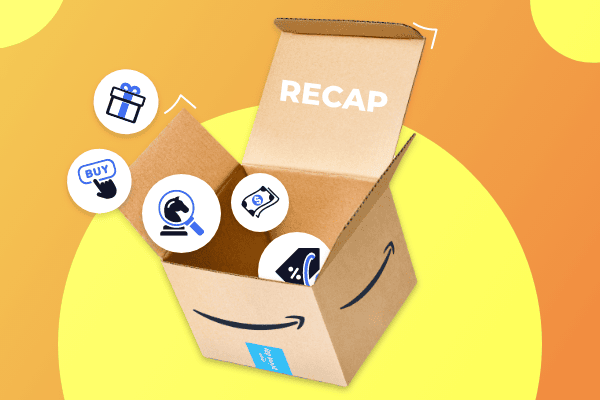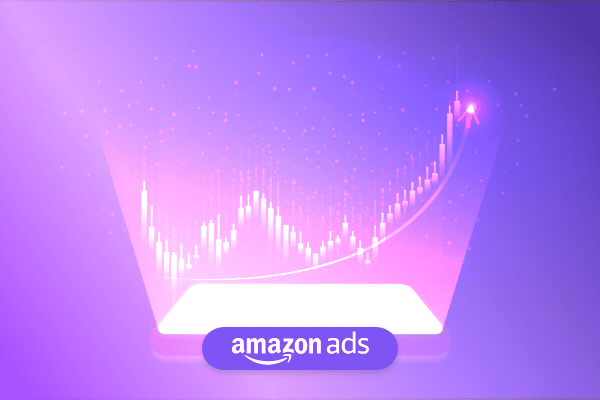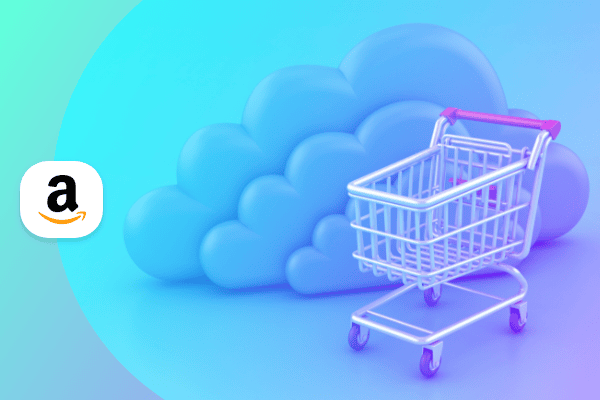Summary
Retail media placements are critical touchpoints that connect brands with consumers across the purchase journey. Coupled with creative ad formats, placements enable brands to reach shoppers with the right message when they are most engaged. By using a strategic, full-funnel approach, marketers can best utilize placements to drive awareness, nurture interest, and secure conversions, ensuring maximum efficiency and impact at every stage of the funnel.
NOTE – The content of today’s post is taken from Skai’s Full-Funnel Retail Media Formula report. Download and read the full report today.
In a full-funnel approach to retail media, placements are crucial levers for moving consumers through the purchase path.
What’s the difference between ads and placements? Ads are the messages, while the placements are the containers where those ads are served to shoppers. Whether on-site, off-site, in-store, or on connected TV/streaming channels, placements are an incredibly important variable in retail media. They serve as the dynamic connection between your brand messaging (ads) and the consumer’s moment of intent.
Full-funnel retail media tip: The same ad run at different places and at different shopper moments can dramitically influence the power of your advertising investment. For maximum impact, first, choose the placement, then choose the ad formats to put in them. There’s a tactical edge for retail markters who understand the nuances of the ad:placement combination impact on consumers.
Placements determine where and when your message reaches the consumer, but their real power lies in their ability to adapt to the consumer’s journey. Rather than confining placements to specific funnel stages, a full-funnel approach to retail media emphasizes contextual flexibility—using placements in the most impactful way based on real-time insights and where the consumer is in their journey.
As retail media continues to evolve, maximizing your placement strategy across multiple contexts is vital. Whether it’s reaching consumers while browsing an online store, browsing social media, or walking down an in-store aisle, a full-funnel placement approach ensures your ads meet consumers when they are most engaged and ready to take the next step.
Some retail media marketers don’t even have a placement strategy; they’re so focused on getting their ads in front of shoppers that they may completely overlook the importance of the where and the when.
On-site placements: The foundation of retail media success
On-site placements are the backbone of most retail media strategies, integrated directly into the retailer’s online store and mobile app, where consumers are already in a shopping mindset. Examples include:
- Search Results Pages
- Product Detail Pages (PDPs)
- Category Pages
- Homepage Banners
- Recommendation Widgets
- Search Grid Placements
Marketers are most familiar and comfortable with these placements, but this familiarity can lead to a lack of strategic depth. Instead of fully leveraging their potential, they may default to standard practices without exploring how these placements can be optimized across the funnel. The opportunity here is significant—beach-front, prime real estate placements are crucial for maintaining and winning market share. To be competitive, marketers need to be aggressive with budgets and bids.
When used strategically, on-site placements can absolutely be powerful across the funnel to drive awareness, nurture interest, and convert shoppers within the same environment. It’s also vital to recognize that retail sites are not just for conversions—they’re also key for product discovery, with potential conversions happening off-site.
Off-site placements: Extending reach beyond the retailer’s domain
Off-site placements extend the reach of your retail media strategy beyond the retailer’s properties, crossing into other channels that have traditionally been siloed.
- DSP Ads
- Display Network Ads
- Social Commerce Ads
- Paid Search Ads
Display network ads offer tremendous growth potential, with vast inventory across the open web. Leveraging first-party retailer data, such as custom segments of in-market “aisle-browsers” or product page viewers, allows for precise targeting. These signals ensure your ads reach shoppers as they browse their favorite content, whether a blog, news site, or entertainment platform, keeping your brand top-of-mind. To take this a step further, apply contextual targeting so your ads appear next to relevant content—think tech sites for consumer electronics products, beauty blogs for CPG products, or outdoor gear on hiking sites.
The success of retail media has blurred traditional channel lines, allowing off-site channels to integrate seamlessly into your overall strategy. Once separate from retail media, social commerce and paid search ads now play a pivotal role in guiding consumers through the journey. Experiment with a balance of open web inventory and more curated premium inventory—both have their place. Curate a list of top publishers where you want your brand to appear and explore PMP deals for these premium placements. This convergence allows for a holistic approach where each channel works together to drive traffic back to retailer sites and maximize conversions across the funnel.
In-store digital placements: Merging the physical and digital worlds
In-store digital placements bring the power of digital advertising into physical retail locations, representing a new frontier in retail media.
- Digital Signage
- Digital Endcap Displays
- Digital Shelf Talkers
- Digital Checkout Counter Displays
- In-App Advertising
This is almost a full-circle moment for retail media, which has its roots in 100+ years of shopper marketing. In-store placements have always been a crucial part of the shopping experience. Still, the digitization of these placements is transforming how brands can engage with consumers in the physical world. As these environments become more digitized, the ability to deliver dynamic, real-time content directly to consumers as they shop will become increasingly valuable. The combination of digital flexibility with the tangible presence of physical retail creates a powerful tool for influencing consumer behavior at the point of purchase.
Connected TV (CTV) / Streaming TV (STV) placements: Television meets retail media
Connected TV placements represent the future of television advertising, where retail media is stepping in as the successor to linear TV.
- Connected TV Ads
- STV (ads on Retailer-Owned Streaming Services)
- Shoppable TV Ads
The convergence of CTV/STV and retail media is game-changing, combining the mass reach of traditional television with the precision and accountability of digital advertising. As linear TV continues to decline—advertising spending dropped from $72.8 billion in 2018 to a projected $59 billion this year—CTV/STV is taking center stage, offering unprecedented opportunities for targeted, data-driven advertising. Retail media data, such as purchase histories and browsing behaviors, enables incredibly precise targeting for CTV/STV ads, reducing wastage and boosting ROI. This shift is significant, with retail media CTV/STV ad spending expected to soar by 335.5% this year alone.
Additionally, making these ads shoppable adds a new dimension to TV advertising, allowing consumers to go from inspiration to purchase without leaving their screens. Advertisers can create remarketing segments from those who viewed CTV/STV ads and retarget them with display ads, both on-site and off-site. For brands looking to increase household penetration and market share, this is where the battle will be won. Advertisers should consider shifting budgets from linear TV to make bold investments in CTV/STV.
To optimize, focus on targeting, frequency capping, and measuring reach, especially incremental reach across formats. Set up brand lift studies to gauge impact and measure success. As CTV/STV continues to grow, it will become a cornerstone of any comprehensive retail media strategy, offering both reach and precision that were once exclusive to digital channels.
Engaging Consumers Across the Funnel
Placements are not just about where your ads appear — they’re about aligning your strategy with the consumer’s mindset at each stage of the funnel. Every placement category offers unique opportunities to connect with consumers, whether they’re just discovering your brand, considering their options, or ready to make a purchase.
Remember, choose the placement first, then the ad format.
To illustrate this flexibility, we’ll use three placements — Search Results Pages, Product Detail Pages (PDPs), and Display Network Ads — as examples to demonstrate how they can be effectively used at every stage of the funnel.
Top of the Funnel: From visibility to precise engagement
In the initial stage of the consumer journey, the goal is to build awareness and capture attention. Visibility at this stage is paramount, as potential customers are exploring options.
- Search Results Pages: Whether as sponsored products or brands ads, the strategic placement of ads on search results pages is essential for capturing interest when consumers are beginning their research. To maximize effectiveness, brands should focus on both high-traffic keywords and long-tail variations that reflect specific consumer queries. This approach not only increases visibility but also aligns closely with user intent, creating opportunities for deeper engagement. Experts emphasize that brands need to craft compelling ad copy that clearly communicates their unique value proposition, enticing users to click through and learn more.
- Display Network Ads: These ads serve as a powerful tool for visual storytelling and brand recognition. At this stage, it’s crucial to create visually striking ads that resonate with the target audience’s preferences. Using demographic and behavioral targeting can significantly enhance the likelihood of engagement. Experts recommend conducting A/B tests on different creatives and messaging strategies to determine which combinations yield the highest click-through rates, allowing brands to refine their approach continuously.
- Product Detail Pages (PDPs): While traditionally seen as conversion-oriented, PDPs also play a critical role in awareness. Ensuring that products are well-represented on relevant PDPs within various retail media networks can introduce your brand to new consumers. Expert insights suggest that PDPs should contain rich content, including detailed descriptions and high-quality images, to capture interest and convey the brand’s quality and credibility.
Middle of the Funnel: From nurturing to decision influence
At this stage, placements are not just about keeping your brand top-of-mind — they’re about strategically positioning your brand to shape the consumer’s decision-making process. Effective placements in the middle of the funnel include product detail pages and social commerce ads, where you can present detailed information and comparisons that guide consumers toward choosing your brand.
By strategically placing your ads where consumers are actively researching and comparing products, you can insert your brand’s value proposition into their decision criteria, significantly increasing your chances of being selected.
- Search Results Pages: As consumers weigh their choices, maintaining visibility on search results pages becomes vital. Brands should implement ad extensions to provide additional information and differentiate their offerings from competitors. Utilizing structured data to display ratings, prices, and availability can also enhance the consumer’s ability to make informed decisions. Experts suggest updating ad content regularly to highlight promotions or new product features, ensuring that the messaging remains relevant and compelling.
- Display Network Ads: These ads can be tailored to reinforce brand messaging during the consideration phase. By leveraging retargeting strategies, brands can remind users of products they’ve previously shown interest in. Experts advocate for using dynamic creative formats, such as carousel ads, to showcase multiple products or features, encouraging deeper exploration and engagement from potential customers.
- Product Detail Pages (PDPs): PDPs are critical for addressing potential objections and guiding consumers toward a favorable evaluation. Brands should focus on providing comprehensive information, such as comparisons with competing products, customer testimonials, and answers to frequently asked questions. This transparency can alleviate concerns and enhance trust. Experts recommend that PDPs utilize persuasive language and compelling visuals to highlight key differentiators, ensuring that they effectively influence consumer decisions.
Bottom of the Funnel: From conversion to competitive advantage
The bottom of the funnel is where the final decision is made, and placements at this stage must be laser-focused on conversion while outmaneuvering the competition. Search results pages and shoppable TV ads are powerful placements here, capturing consumers at the exact moment they are ready to purchase.
The challenge at this stage is not just to drive conversions but to ensure your brand is chosen amidst all the competitive noise. Your placements must be optimized to close the deal, offering clear calls to action and making it as easy for consumers to choose your product.
- Search Results Pages: As consumers near the end of their decision-making process, optimizing ad placements for high-intent keywords is crucial. Brands should focus on creating clear and enticing calls to action, emphasizing unique selling propositions such as “Limited time offer!” or “Best value.” Experts suggest that incorporating structured snippets can provide essential information directly within search results, further aiding the consumer in their final decision.
- Display Network Ads: These ads can be strategically employed to reduce friction in the purchase process. Brands should highlight special offers or remind consumers of items left in their shopping carts. Experts stress the importance of creating a sense of urgency in these ads, such as using countdown timers for promotions, which can motivate consumers to complete their purchases before missing out.
- Product Detail Pages (PDPs): PDPs are the final touchpoint before conversion, and they should be optimized for clarity and persuasion. Brands must ensure that these pages feature strong calls to action, detailed product descriptions, and social proof, such as customer reviews and ratings. Experts recommend showcasing promotional messaging—like “Only a few left in stock!”—to create urgency and prompt immediate purchases, enhancing conversion rates effectively.
Best Practices for Placement Utilization
Strategically diversify your placements. Focus on utilizing placements that align with your full-funnel strategy rather than just spreading your efforts thinly across all available options. Identify the placements that will best support each stage of the funnel — capturing initial awareness, nurturing consideration, or driving conversion — and allocate your resources accordingly.
Utilize placement-specific creative. Truly mastering placements requires a deep understanding of all your options, including targeting settings, ad format choices, and creative possibilities available for each placement. Tailor your creative to maximize the potential of each placement, ensuring that your message resonates with the consumer in the specific context where they encounter your ad.
Maintain a strong POV and knowledge sharing. Developing a strong point of view on each placement and sharing insights across teams is crucial for optimizing placement strategy. Encourage collaboration and knowledge sharing between teams (such as paid search, social, and in-store marketing) to ensure everyone understands when, where, and how to use placements most effectively.
Focus on placement efficiency. Rather than prioritizing placements based solely on visibility or potential reach, concentrate on those that offer the most efficient path to achieving your marketing objectives. This means continuously evaluating which placements provide the best return on investment, both in terms of cost efficiency and impact on the consumer journey.
The content of today’s post is taken from Skai’s Full-Funnel Retail Media Formula report. Download and read the full report today.







